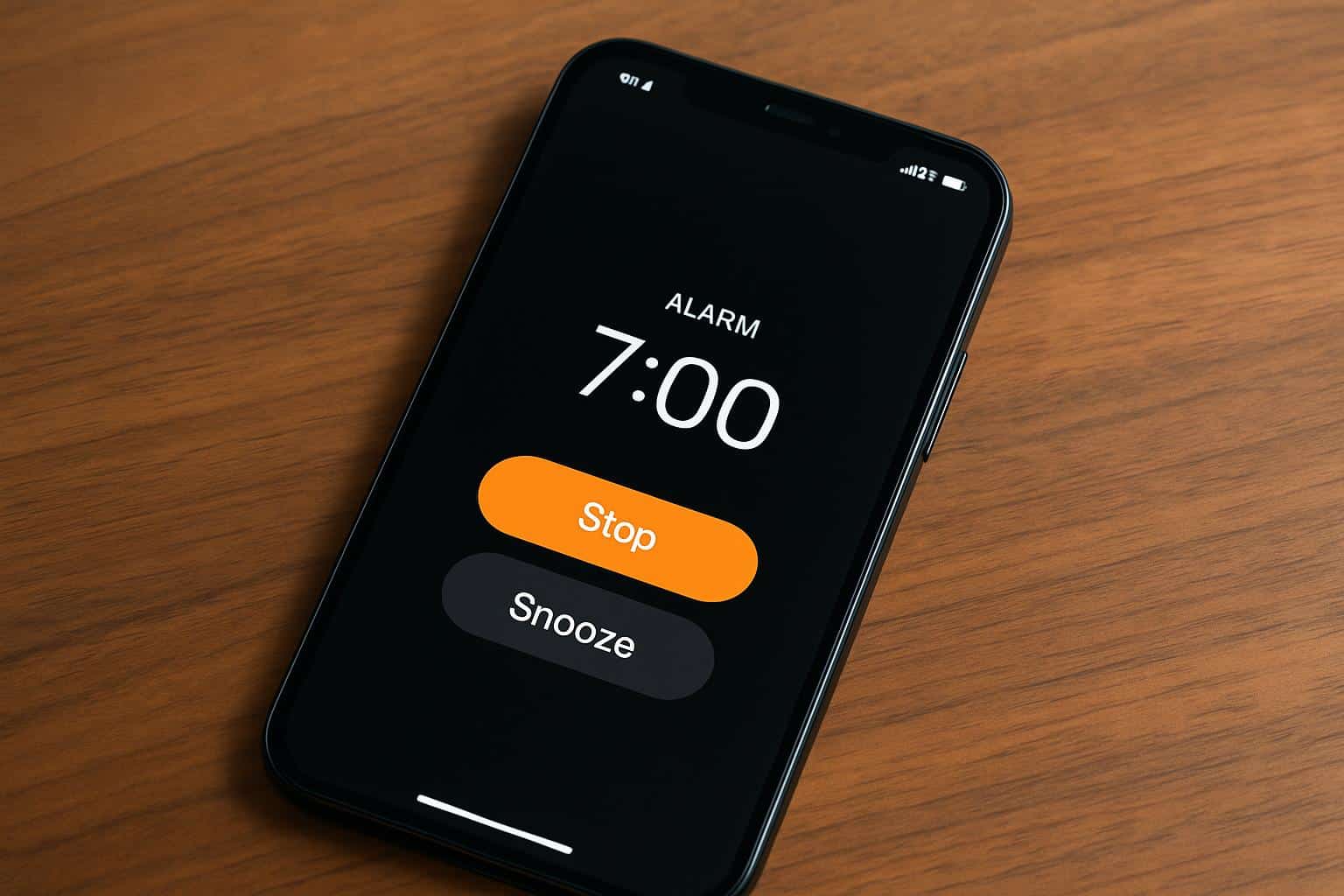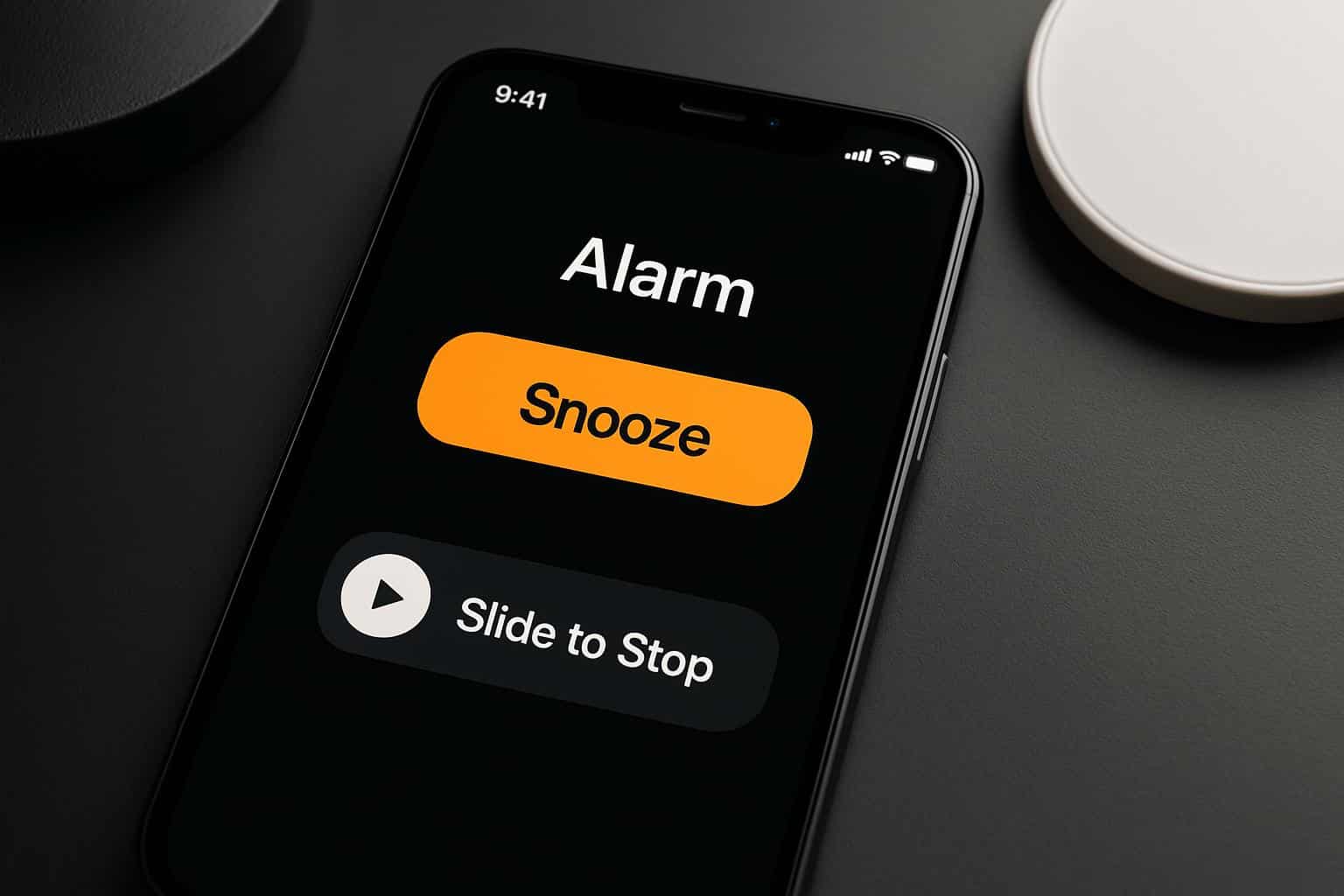Apple is testing a small but meaningful tweak to the Clock app that could save sleepy users from sabotaging their own mornings. In the latest iOS 26.1 beta, the familiar Stop button for alarms is replaced by a Slide to Stop control, making it far less likely you’ll accidentally shut an alarm off when you meant to snooze.
What Apple is changing in the iOS 26.1 alarm design
Spotted by MacRumors in iOS 26.1 Beta 2, alarms now present two different actions with two different gestures: a single-tap Snooze button and a horizontal slider labeled Slide to Stop. To turn an alarm off, you must deliberately drag the slider from left to right. Snoozing still takes one tap.

The same interaction appears in the Timer interface within the beta, where a Repeat button sits next to a slider with a stop icon. It’s a simple distinction—tap to snooze, slide to stop—but it cleanly separates two high-stakes decisions you often make while half awake.
As with any beta feature, Apple could revise or remove it before the public release. But the early implementation already feels aligned with long-standing iOS design instincts around intent and error prevention.
Why a slider cuts morning mistakes and reduces errors
When we say you’re not fully awake, we mean sleep inertia can cloud your best judgment and motor control at first. The CDC and National Sleep Foundation call this a period of greatly reduced alertness and longer reaction time, lasting as long as a few minutes. It is easy to errantly tap the wrong button on the screen. Requiring a slide to affirmatively end that alarm greatly increases the required firmness.
Human–computer interaction research supports that if an interaction entails more prominent movement in a particular direction, there are far fewer inadvertently activated connections. Further, spatially and mechanically separating the two actions minimizes the possibility of a slip—your thumb accidentally touching End instead of Snooze.
There is also a practical upside to accessibility. A more substantial sliding target with an apparent gesture could be easier for persons with tremors or reduced dexterity to navigate under pressure.

The new alarm behavior is a nod to Slide to Unlock, one of the iPhone’s many iconic features. It was on the first iPhone and also the last iPhone, even when iOS 10 made the Home button one click. Millions of users are familiar with it not only because of the skeuomorphic charm but also because it requires deliberate action before allowing access. It borrows Apple’s same philosophy for doing what needs to be done.
Why now, who benefits, and what users can expect
Other platforms have used movement to gate alarm dismissal, from swipe gestures in various Android skins to hardware button combinations on feature phones. The common thread is the impression that stopping an alarm should be slightly harder than snoozing it, especially when mis-taps carry real-world consequences like missed classes or meetings.
The earlier changes to the alarm UI in iOS 26 brought the Snooze and Stop buttons closer together. For some users, that increased Stop taps by accident. The beta’s slider addresses that feedback directly by turning Stop into a more deliberate gesture while keeping Snooze as the easy, low-friction option.
Frequent travelers, shift workers, students, and anyone juggling multiple alarms stand to benefit the most. In routine usability tests, simply separating high-consequence actions like deleting, powering off, or ending timers tends to lower error rates. The alarm is another case where friction is a feature, not a bug.
What to watch before release and potential refinements
Since this is a beta, Apple could fine-tune haptics, make the slider’s hit area larger, or introduce access settings that let users choose between tap, slide, or physical button actions for stopping alarms. Apple’s Human Interface Guidelines consistently emphasize clear affordances and avoiding destructive taps; the slider fits neatly into their playbook.
If the change ships broadly, expect consistency across Clock features, the Timer, and the Bedtime/Wake Up alarms. In the meantime, muscle memory may be a guideline. For anyone concerned about not getting up in time, however, the ideal outcome can happen by accident: the button you’re wrongfully pressing when you’re half-asleep is even more difficult to hit when you’re asleep. In summary, a small design shift may have a significant impact on punctuality. Apple is making the morning’s most challenging part a little easier by inserting a previously iPhone-specific movement at the perfect time.

